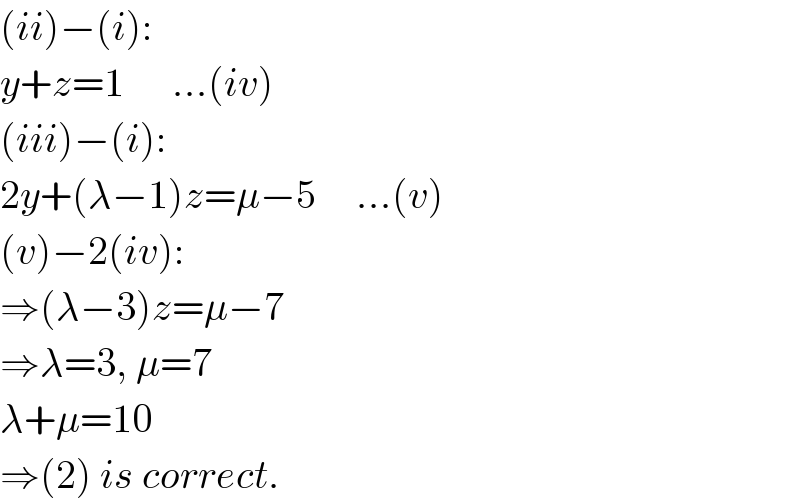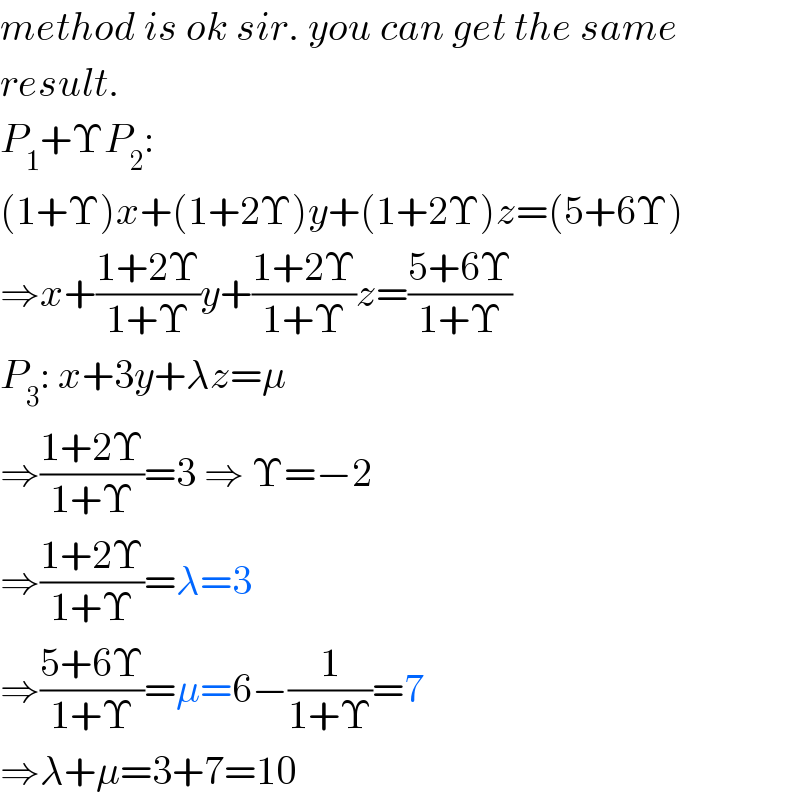
Question and Answers Forum
Previous in Matrices and Determinants Next in Matrices and Determinants
Question Number 57698 by rahul 19 last updated on 10/Apr/19

Commented by rahul 19 last updated on 10/Apr/19

Answered by mr W last updated on 10/Apr/19

Commented by rahul 19 last updated on 10/Apr/19
Sir, what's the problem in my method?
Commented by mr W last updated on 10/Apr/19

Commented by rahul 19 last updated on 11/Apr/19

Commented by mr W last updated on 11/Apr/19

Commented by rahul 19 last updated on 11/Apr/19

